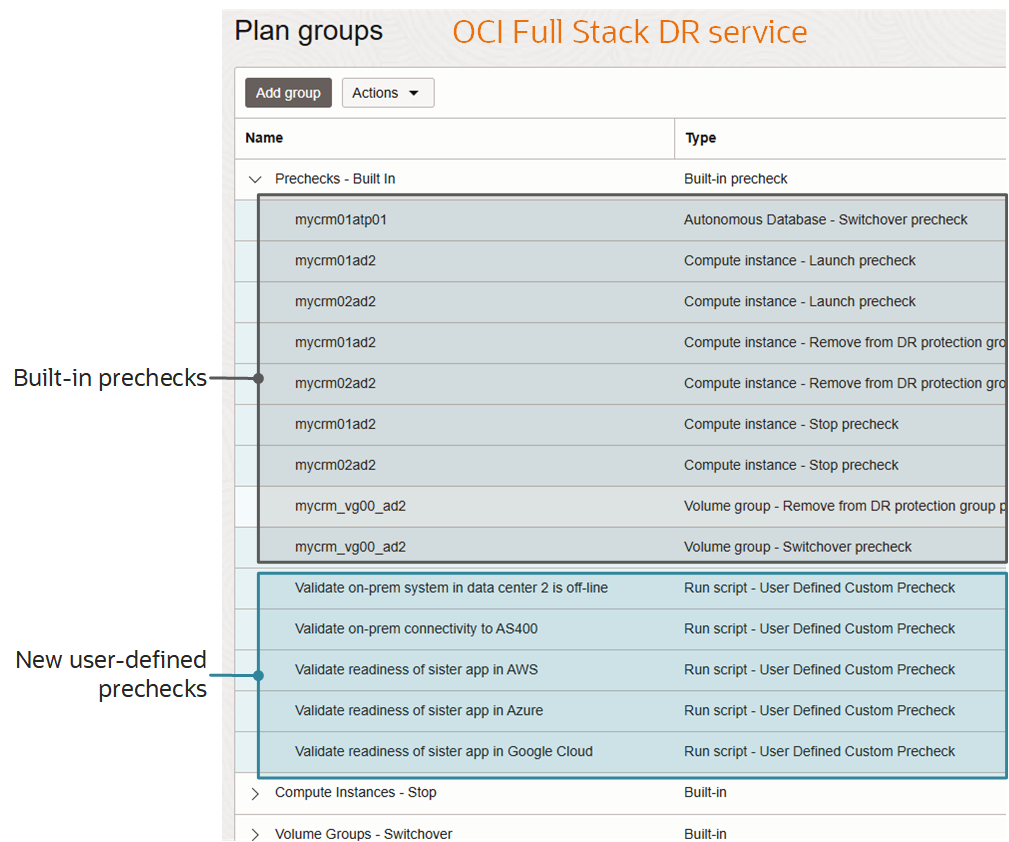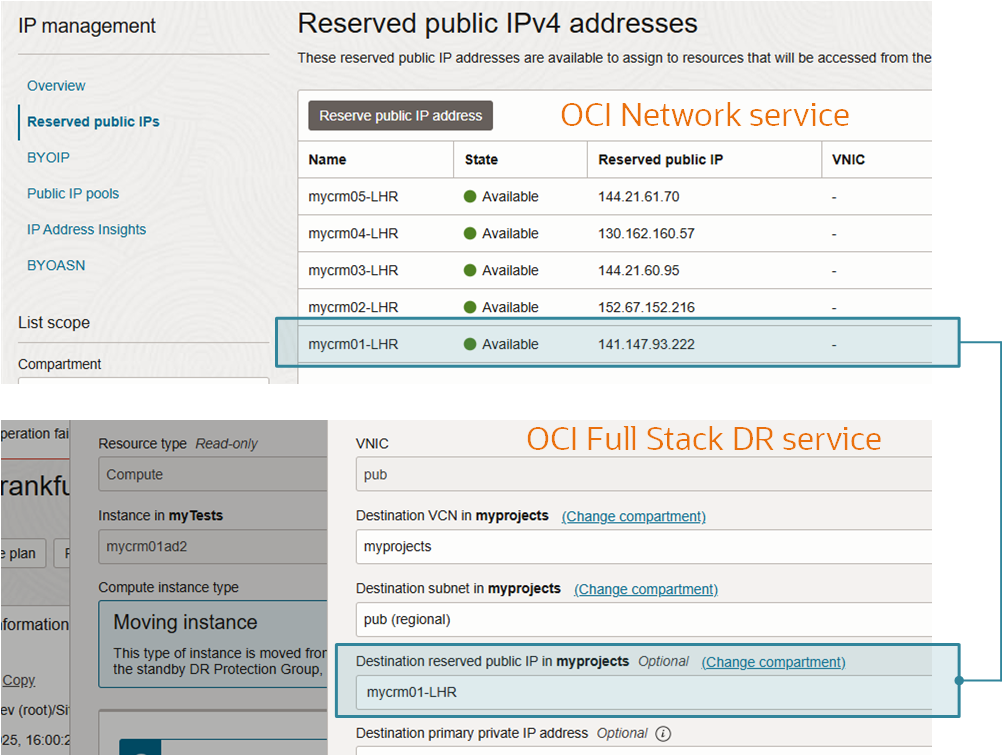OCI Full Stack Disaster Recovery released a few new features in late April 2025. Here is a quick rundown of some of the new capabilities.
User-defined Prechecks
Consider the disaster recovery process as something like assembling a complex, 2000-piece jigsaw puzzle. At some point, we need take the puzzle out of the box, ensure all the pieces are there, none of them are broken, and everything is ready to go before we begin assembling the puzzle; so it goes with disaster recovery.
Infrastructure and databases for any given business system are constantly changing. This means your IT staff needs to periodically verify all the puzzle pieces such as compute, storage, databases, load balancers and custom automation that manage applications are in place and ready to go at any time. If you are using Full Stack Disaster Recovery (DR), then this is a simple task. However, if you are still using your own in-house, self-managed recovery process following a DR runbook manually maintained in a text file or spreadsheet, then the task of validating the integrity of your recovery plans is Herculean.
Without Full Stack DR, IT operations staff commonly lack the time and personnel to keep up with validating the integrity of their manually maintained DR runbooks for self-managed disaster recovery. The lack of time and resources mean recovery teams often find themselves spending hours of time chasing down outdated DR runbooks, missing infrastructure, broken storage replication, problems with databases, missing scripts and dealing with any number of other unexpected problems that crop up during a recovery drill or actual recovery.
Full Stack DR helps operations staff avoid these costly delays using our built-in prechecks and DR drills to help validate the integrity of your DR plans.
Full Stack DR has always had built-in prechecks that help find potential problems with the infrastructure, databases, and custom automation you’ve added to DR Plans that may impact or delay a full recovery. The built-in prechecks are non-invasive, passive validations of resources that are members of a DR Protection Group and can be run at any time with zero impact to production workloads. But the native, built-in prechecks only act on the OCI resources that are members of DR Protection Groups.
IT organizations often have other assets like applications, systems and tools which are not members of DR Protection Groups that may have dependencies on the recovery or impact the recovery being orchestrated by Full Stack DR in OCI. These other assets might be in your OCI tenancy, in your own data center, or with other cloud providers, and not something Full Stack DR will be aware since they are not members of a DR Protection Group.
We’ve added a new capability that allows your IT staff to create custom, user-defined prechecks to check the validity of anything that Full Stack DR may not be aware. The user-defined prechecks can execute anything, but should only be used to call scripts or OCI functions that perform passive, non-invasive validation. The figure below shows an overly simple DR plan with some fictional examples of custom prechecks.

The user-defined tasks will be executed along with the built-in tasks any time a precheck is executed manually or as part of a DR plan. Full Stack DR prechecks should be executed periodically to help catch inconsistencies in DR plans before they become time consuming problems during a DR drill, failover, or switchover. If you are interested in learning more about this new feature, then take some time to follow our new Oracle Help Center tutorial demonstrating how to create user-defined prechecks.
Assign reserved public IP addresses
OIC Networking has supported reserved public IP addresses for a long time. Full Stack DR has added a new optional capability to our VNIC mapping that allows you to assign a specific reserved public IP address to a VNIC attached to moving compute during a recovery operation in the standby availability zone or region. This feature ensures that nothing else can accidentally grab an IP in the standby region until Full Stack DR assigns it during a recovery as expected.
Our built-in prechecks will catch any potential problems if someone has unwittingly managed to unreserve an IP in standby region. So, don’t forget to run prechecks periodically to help ensure someone hasn’t circumvented your reserved IPs.

The process is simple and can be configured when adjusting existing Compute member resources or adding new Compute to a DR Protection Group. First, reserve one or more public IP addresses using IP Management on the resource details page for any Virtual Cloud Network of your choice in the OCI Console. Give the reserved IP a distinctive name so it is easy to recognize when assigning it to a VNIC mapping in Full Stack DR as shown in the figure below.
We’ve written a new Oracle Help Center tutorial with step-by-step instructions explaining how to use this powerful new feature.
Additional Important Enhancements
We also introduced quite a few more important feature enhancements. Please click any of the links in the following list of Oracle Help Center (OHC) tutorials to learn much more about each new feature and how to use them.
- Mount block storage to multiple mount points for LVM
- Customer managed keys for autonomous database
- Enable backup policy restoration and customer-managed keys for block storage
- Enable snapshot policy restoration and customer-managed keys for file storage
- Add custom user-defined prechecks
- Use Reserved Public IPs with Moving Instance
Want to know more?
If you haven’t seen OCI Full Stack Disaster Recovery in action yet, ask your Oracle Cloud Infrastructure account team to set up a demonstration today. For more information, including documentation, pricing, customer success stories, videos, tutorials, and hands-on labs, visit OCI Full Stack Disaster Recovery product page.
